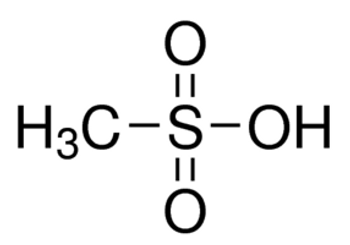Description
Dehydroabietic acid
≥95% (LC/MS-ELSD)
Synonym: Abieta-8,11,13-trien-18-oic acid, Dehydroabietate
-
CAS Number 1740-19-8
-
Empirical Formula (Hill Notation) C20H28O2
-
Molecular Weight 300.44
-
EC Number 217-102-8
-
MDL number MFCD09839012
-
PubChem Substance ID 329824767

-
NACRES NA.25
Properties
| Related Categories | Cell Biology, Nutrition Research, Phytochemicals by Chemical Classification, Terpenes and Terpenoids (Isoprenoids) |
| assay | ≥95% (LC/MS-ELSD) |
| storage temp. | −20°C |
| SMILES string | CC(C)c1ccc2c(CC[C@H]3[C@@](C)(CCC[C@]23C)C(O)=O)c1 |
| InChI | 1S/C20H28O2/c1-13(2)14-6-8-16-15(12-14)7-9-17-19(16,3)10-5-11-20(17,4)18(21)22/h6,8,12-13,17H,5,7,9-11H2,1-4H3,(H,21,22)/t17-,19-,20-/m1/s1 |
| InChI key | NFWKVWVWBFBAOV-MISYRCLQSA-N |
General description
Natural product derived from plant source.
Biochem/physiol Actions
Dehydroabietic acid (DHA), along with abietic acid (AA), are resin acids used in the production of wood pulp and common in paper mill effluents. Dehydroabietic and abietic acids are potentially toxic and inhibit growth, studies have shown that the levels of DHA and AA in pulp and paper mill effluent, as well as paperboard products used in food packaging, are well below effective levels. DHA has potential as treatment for obesity and metabolic syndrome, obese diabetic KK-Ay mice treated with DHA showed decreased plasma glucose, insulin, and triglyceride levels.
Safety Information














